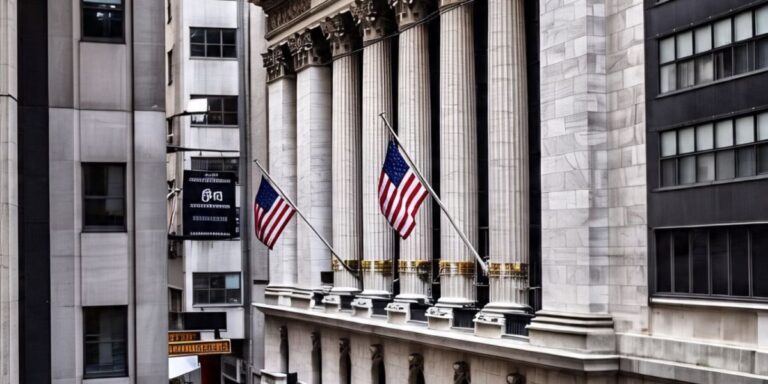
Understanding the NYSE: A Global Financial Powerhouse
Let’s be real—“NYSE” sounds like one of those intimidating finance acronyms people throw around like everyone’s supposed to know what it means. But you’re here, so let’s clear the fog.

The New York Stock Exchange (NYSE) isn’t just another ticker-flashing building in Manhattan. It’s the grandfather of all stock markets—an icon of capitalism and one of the most influential financial hubs in the world. From memes about bulls and bears to real million-dollar trades, the NYSE is where big moves happen.
What Is the NYSE and Why Does It Matter?
So… what is the NYSE exactly?
At its core, the New York Stock Exchange is a marketplace—a place where buyers and sellers meet to trade shares of publicly listed companies. It’s the Wall Street version of a giant eBay, except you’re bidding on pieces of companies like Apple or Berkshire Hathaway instead of sneakers or old Pokémon cards.
Here’s why it matters:
- Size: The NYSE is the largest stock exchange by market capitalization. We’re talking trillions of dollars.
- Trust factor: Being listed on the NYSE is like a corporate rite of passage. It signals maturity, stability, and global credibility.
- Visibility: If you’re investing in big-name companies, chances are they’re listed right here.
NYSE vs. Other Global Exchanges
You might wonder, Isn’t there a London one? What about Tokyo? Good questions.
- NYSE vs NASDAQ: The NASDAQ is known for tech-heavy hitters (like Meta, Google, etc.), and it’s 100% electronic. NYSE? It blends electronic systems with human oversight. Think robots and real people wearing suits.
- NYSE vs others (like LSE or TSE): While London and Tokyo play big roles in their regions, the NYSE is the OG—globally dominant and culturally iconic.
History of the New York Stock Exchange
Let’s throw it back—way back.
Origins on Wall Street (The Buttonwood Moment)
Picture this: It’s 1792. A bunch of dudes in powdered wigs gather under a buttonwood tree on Wall Street and scribble out an agreement to trade stocks. That agreement? It’s known as the Buttonwood Agreement—and it’s the origin story of the NYSE.
It’s kind of wild to think today’s financial behemoth started with 24 guys and zero computers.
Major Milestones That Shaped the NYSE
A few historic pit stops:
- 1867: The first stock ticker was introduced (yep, that constant scrolling of prices started way back).
- 1929: The infamous crash that triggered the Great Depression.
- 1987: Black Monday—one of the biggest one-day drops ever.
- 2006: NYSE merged with electronic rival Archipelago and went public itself. Meta move, right?
How the NYSE Works: Trading Mechanics Explained

Okay, so how does all this function?
Auction Market vs. Electronic Trading
The NYSE runs on a hybrid model. Part of it’s old-school auction-style (yelling on the trading floor and flashing hand signs—yes, still a thing). The other part? Fully digital.
The auction market means buyers and sellers submit bids, and trades happen when prices match. Electronic systems speed up the process, but human Designated Market Makers (DMMs) step in to maintain fairness and order.
Role of Brokers and Specialists
You’ll hear about brokers (your middlemen who execute trades on your behalf) and specialists (a.k.a. DMMs) who manage the chaos. Think of brokers like your personal shoppers and specialists like referees in a football match—only the stakes are millions of dollars per minute.
NYSE Trading Hours and Holidays
You can’t just wake up at 2 a.m. and start buying Tesla shares. Timing matters.
Standard Trading Times
- Regular hours: 9:30 AM to 4:00 PM (Eastern Time), Monday to Friday.
- Closed on weekends and holidays.
After-Hours and Pre-Market Trading
But here’s the twist—pre-market starts as early as 4:00 AM, and after-hours can stretch to 8:00 PM. These sessions are quieter, riskier, and often move on news or earnings reports that hit when the market’s closed.
Trading off-hours is kind of like playing pickup basketball at 3 a.m.—high risk, low crowd, but sometimes a clutch shot.
Top Companies Listed on the NYSE in 2025
Let’s name-drop a few legends:
- Apple Inc. (AAPL)—Still crushing it.
- Amazon (AMZN)—Not just books anymore.
- Berkshire Hathaway (BRK.A)—Warren Buffett’s baby.
- Coca-Cola, JP Morgan, ExxonMobil—old guards holding the fort.
These companies didn’t just land on the NYSE—they earned it. Listing on the NYSE requires financial transparency, regulatory compliance, and a proven record of stability.
What Makes a Stock NYSE-Worthy?
- Consistent profits
- Strong management
- Compliance with strict financial reporting standards
You can’t be a half-baked startup and just roll up to the NYSE. You need street cred.
How to Buy NYSE Stocks as a Beginner
Alright, say you’re hyped now—how do you get in?
Step 1: Open a Brokerage Account
Think Robinhood, Fidelity, Charles Schwab, or E*TRADE. Some are slick apps, others are full-service platforms. Choose based on how much hand-holding you want.
Step 2: Understand Market vs. Limit Orders
- Market Order: Buy at the current price, whatever it is. Fast, simple.
- Limit Order: Set the price you’re willing to pay. If it hits, you buy. If not, no dice.
If you’re on a budget or just not trying to panic-buy, limit orders give you control.
Bonus tip? Start small. Get a feel for the rhythm before you throw big money around.
NYSE vs. NASDAQ: Key Differences
Let’s clear up this classic confusion.
| Feature | NYSE | NASDAQ |
| Founded | 1792 | 1971 |
| Listing Style | Auction + Human Oversight | Fully Electronic |
| Company Types | Blue-chip, mature firms | Tech-heavy, growth-oriented |
| Vibe | Old-school Wall Street classic | Techy Silicon Valley flair |
You know what? NYSE is like Rolex—classy, solid, and established. NASDAQ is more like a Tesla—fast, futuristic, and unpredictable.
The Future of the NYSE: Trends to Watch

The NYSE isn’t stuck in the past. It’s evolving—fast.
AI in Trading
Artificial intelligence is shaking things up—algorithms now handle high-frequency trading, analyze patterns, and sometimes react faster than human intuition ever could. But that also means flash crashes and AI-triggered market moves. Spooky, right?
International Listings & Crypto ETFs
- Global companies want in. More non-US brands are listing on the NYSE to boost visibility.
- Crypto ETFs are on the rise. Bitcoin spot ETFs listed on traditional exchanges? Yep, it’s happening.
The NYSE is opening doors to digital assets, slowly but surely. Still cautious, but it’s no longer pretending crypto doesn’t exist.
Wrapping It All Up—Why the NYSE Still Dominates
So, what have we learned?
- The NYSE is more than just a building—it’s a global financial engine.
- It combines old-school credibility with new-school tech.
- It’s home to some of the biggest, baddest companies on the planet.
- And for anyone looking to invest—or even just understand the money game—it’s a place worth knowing.
Honestly, whether you’re trying to build wealth, start investing, or just sound smarter at dinner parties, knowing how the NYSE works is a serious flex.
And remember: it’s not about timing the market—it’s about time in the market. Start slow, stay curious, and don’t get swayed by hype. Because when it comes to money moves, the NYSE is where the real game begins.